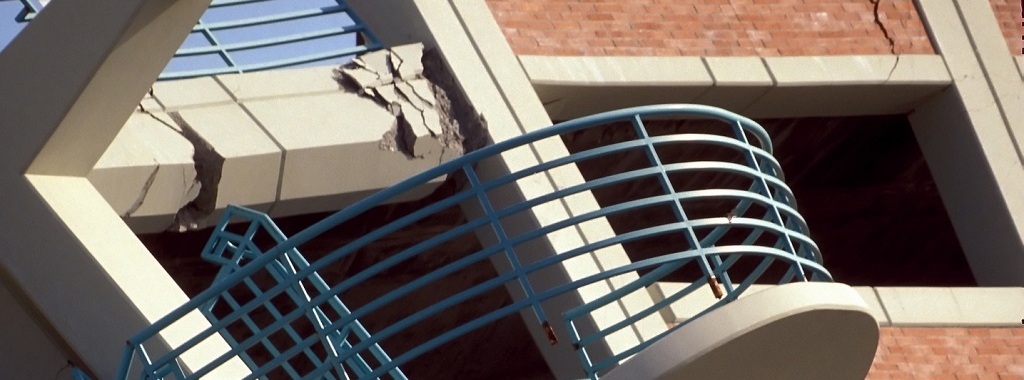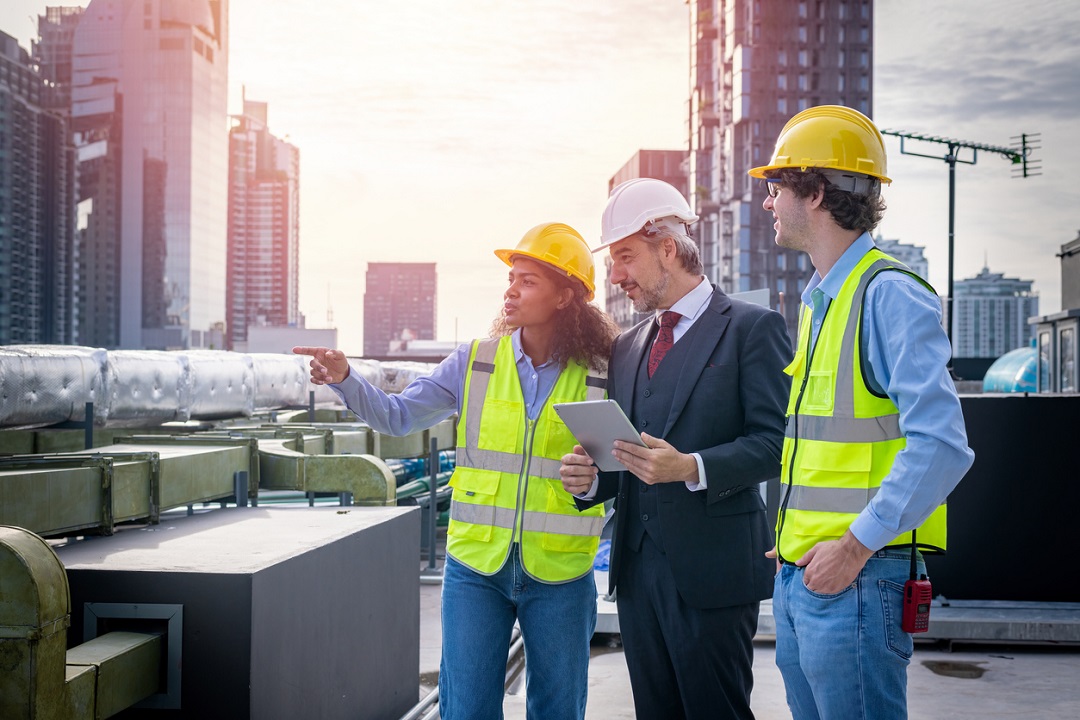Rachel Holland, a Simpson Strong-Tie engineer, reflects on the profound impact of the Northridge earthquake in Southern California on January 17, 1994. Living just 8 miles from the epicenter, the earthquake shaped her perspective on natural disasters and inspired her journey into engineering. In an interview, she shares her vivid memories of the chaos, destruction, and challenges faced during the aftermath. Hear how this seismic event played a pivotal role in shaping Rachel’s career and influencing her commitment to structural engineering.
In the early hours of January 17, 1994, Southern California was jolted by the 6.7-magnitude Northridge earthquake. I was 12 years old, living in Simi Valley, about 8 miles from the epicenter as the bird flies. I remember the event and the aftermath really well. The noise alone was so wild. Everything fell off the shelves and walls and broke. Broken glass was everywhere. I remember seeing dust clouds rising from the mountains during aftershocks and fire coming out of the roads from broken gas lines until they were turned off. The water pipes broke, and we had to go down to Knolls Park for the first few days to get buckets of water to flush the toilets. For weeks afterward, we had to go to the Amtrak station to get drinking water. I also remember having to go to my grandparents’ house to take showers because there was no water, let alone hot water. People pitched tents in their front yards because their houses weren’t safe to go back in. I had friends whose homes were red-tagged and needed to be rebuilt. Some moved away because of the severity of the damage. An adjacent neighborhood suffered a lot of damage, requiring many homes to be rebuilt.
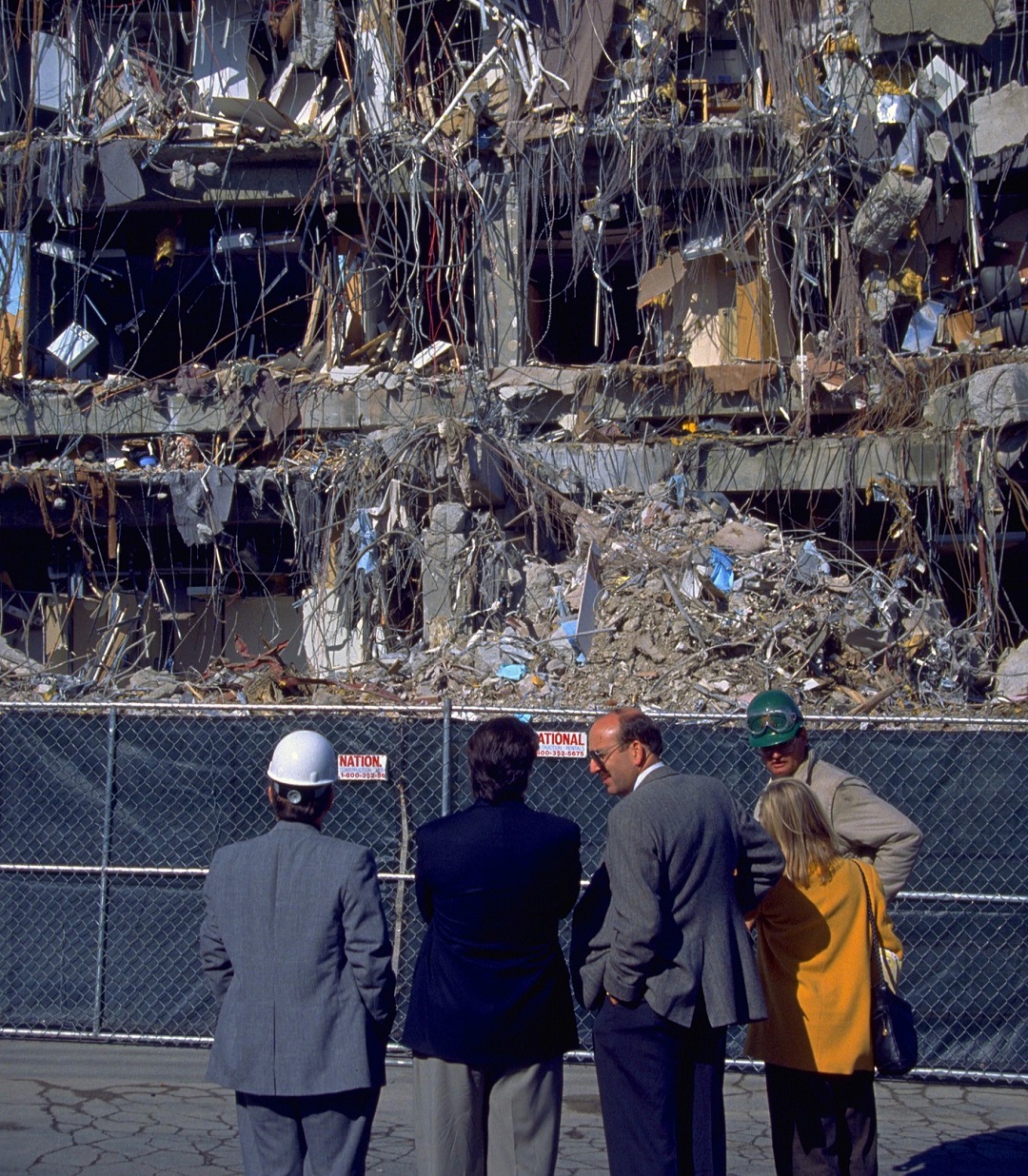
To this day, when I visit my parents’ house, I drive through that older neighborhood with more modern ‘90s homes speckled throughout and remember why they look newer. My father is a contractor, and following the earthquake, he immediately became very busy with work. Even now, I keep shoes readily available by my bed, don’t hang pictures with glass above my headboard, and don’t arrange furniture so that my bed is under any windows. While those are my memories of the ways I was affected, the quake also wreaked havoc across the entire region, causing widespread damage to infrastructure and homes and claiming lives. As we mark its 30th anniversary, it’s essential to revisit the historical context, remembering the impact and assessing the subsequent changes in structural engineering.

The Northridge earthquake exposed critical vulnerabilities in building structures, vulnerabilities that caused significant failures and collapses. Many of the damaged structures were designed and built before the implementation of modern seismic design standards. But there were also newer structures that suffered partial or complete collapse, such as the partially collapsed parking structure at CSUN, which had completed construction just 18 months prior to the earthquake and was likely built to the 1991 UBC. Examples of the weaknesses identified by the structural failures include soft-story buildings, unreinforced masonry buildings, non-ductile concrete structures, inadequate connections, foundation failures, and also outdated building codes. With widespread damage, the earthquake highlighted inadequacies of existing building codes and regulations, demonstrating the need for comprehensive updates to ensure structures could better withstand seismic forces.

The aftermath prompted a comprehensive reassessment of structural engineering practices. The lessons learned from the vulnerabilities exposed played a crucial role in reshaping building codes, construction practices, and retrofitting strategies.
In the three decades since Northridge, structural codes and standards and solutions have seen impressive advancements. In the Northridge earthquake, hundreds of steel moment frame buildings experienced brittle fractures at their connections, and while none of these steel-frame buildings collapsed, the unexpected type and severity of damage prompted the development of new design approaches for future steel buildings and examination of different techniques for repairing existing damage. The research led to innovative connections, such as the “dog-bone” or “reduced beam section (RBS)” connection, now often used for steel-frame buildings.

Taking it even further, and considering the difficulty, expense, and time involved when repairing the beams in steel moment frame assemblies using the RBS connection type, Simpson Strong-Tie developed the Strong Frame® special moment frame and the Yield-Link® moment connection. These solutions focus the damage on the Yield-Link, rather than the beam as in typical moment frame connections, and the Yield-Link connections are 100% bolted and therefore can be swapped out for other readily available “off-the-shelf” Yield-Links after an event without repairing or replacing the existing moment frame beams or columns. Research on the earthquake performance of steel buildings continues today, and new innovations have been developed in recent decades.
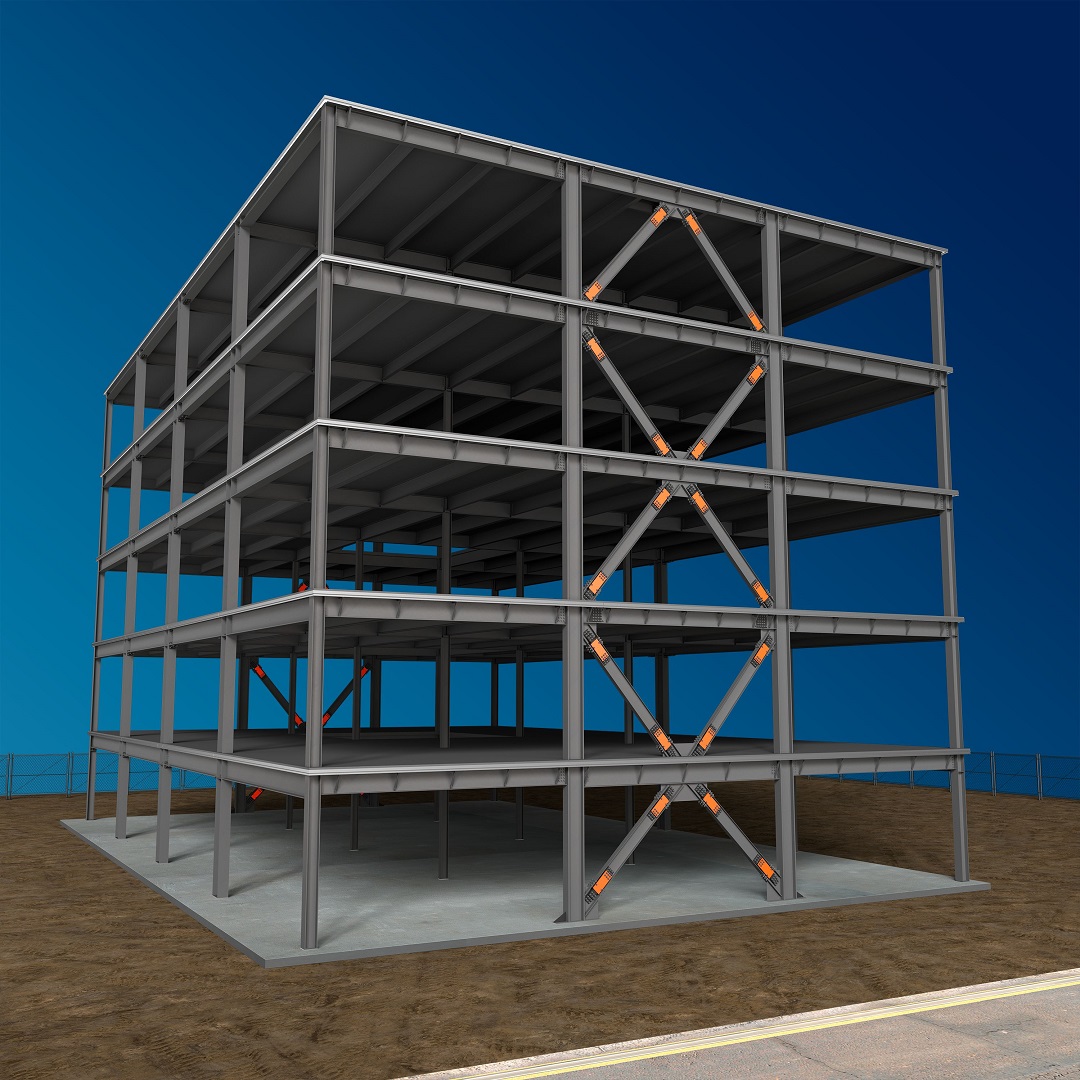
For seismic resistance, many steel-framed buildings now utilize buckling restrained braced frames (BRBFs), dampening systems, self-centering systems, rocking systems, or systems with replaceable components (such as the Simpson Strong-Tie Yield-Link moment connection and Yield-Link brace connection) that are more quickly and easily repaired than systems where one or more braces, beams, or columns have to be repaired after an earthquake.

With nearly half of the property losses resulting from the Northridge earthquake coming from damage to wood-frame construction, many studies, testing programs, and analysis programs of this construction type ensued. Many of these investigated large apartment and condominium buildings, single-family houses, and some non-residential buildings (e.g., school and commercial), with an emphasis on buildings with a weak lower floor, called a “soft story,” to accommodate parking spaces on the ground level.
Innovations in design and construction methods, along with jurisdictional retrofit ordinances in northern and southern California have improved retrofitted building performance and community resilience. We have witnessed the success stories of improved performance of retrofitted buildings in earthquakes after the Northridge earthquake as well as in full-scale retrofitted building tests, and appreciate how the different advancements in structural engineering are helping to elevate earthquake performance.
Additionally, since the mid-2000s to 2011, after Hurricane Katrina, the Great ShakeOut Scenario, and the Christchurch (NZ) earthquake, there have been discussions and efforts to evolve building codes from simply targeting building collapse prevention for most buildings to targeting reduced damage and reduced recovery time after a natural hazard event — or what’s called functional recovery. This shift recognizes that the industry and building codes have done a great job at protecting lives but could do more to reduce costs and decrease recovery time, because individuals, organizations, and communities often don’t recover well or at all after large events.
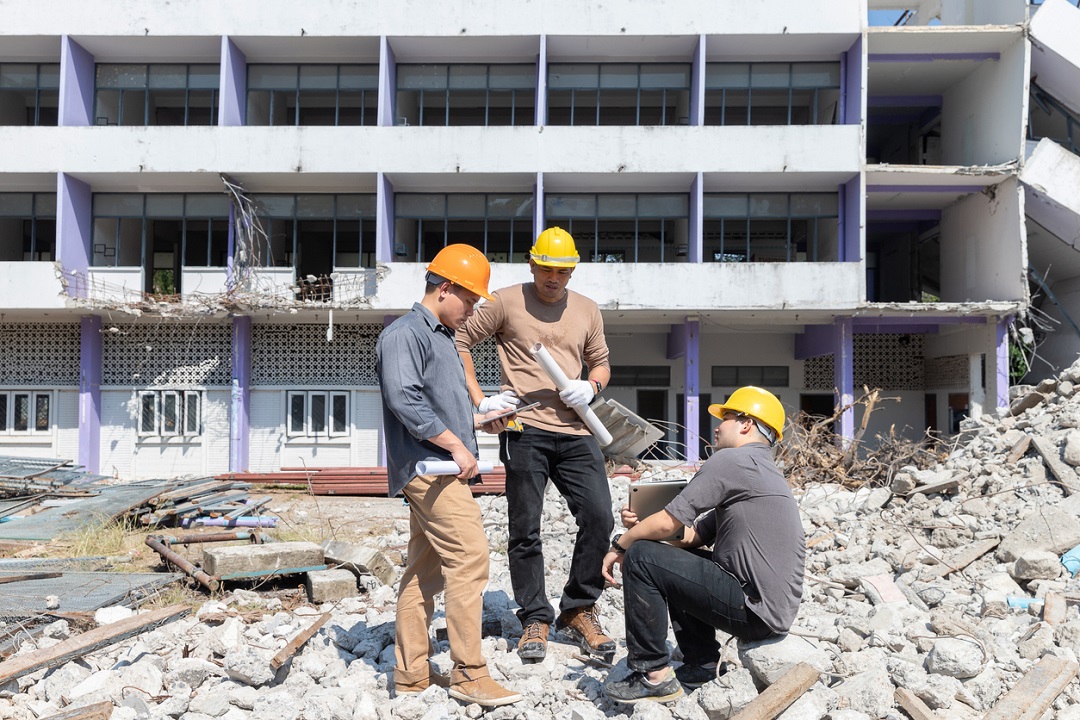
The anniversary of the Northridge earthquake is a great opportunity to assess the current state of earthquake preparedness and discuss what else might be done to more quickly and broadly increase our resilience. Some solutions would seem to be the increased use of innovative, effective, and efficient products for resilient-based design; government, insurance, and mortgage incentives; and more transparency to building owners and occupants regarding their building performance. National code and standard developers and those in hazard-prone regions continue to refine their strategies and implement the latest research in structural engineering. Looking ahead, communities at risk of natural hazards continue to face challenges and opportunities that may include increasing frequency and/or strength of events as well as increasing building construction and financing costs and construction labor shortages. Thoughtful community stakeholder planning, innovation, proactivity, and incentivization are needed to further enhance community resilience.
Gaining insights from those directly involved in the post-Northridge earthquake recovery efforts, including some long-tenured engineers at Simpson Strong-Tie, provides a unique perspective. Through the experiences and stories of structural engineers, survivors, and emergency responders shedding light on the challenges faced and the strides made in the aftermath of the earthquake, we have a better understanding of ongoing challenges in earthquake engineering. Assessing and communicating seismic risk effectively to communities, businesses, and policymakers is a complex challenge. Improving risk communication strategies and the tools to help with those strategies are essential for fostering a culture of earthquake preparedness.
Beyond spurring structural advancements, the Northridge earthquake had a profound impact on local communities. Examining the resiliency of neighborhoods and the implementation of initiatives promoting earthquake preparedness reveals the crucial role communities play in minimizing the impact of seismic events. Community-driven efforts continue to enhance overall resilience, emphasizing the collaborative nature of earthquake preparedness.
This 30th anniversary of the Northridge earthquake is a moment to reflect on the progress made, lessons learned, and the collective efforts to enhance new and existing building performance in earthquakes and community resilience. Engineers, researchers, and policymakers continue to work collaboratively to address these challenges and improve the seismic resilience of communities worldwide. Ongoing advancements in technology, research, and education are essential components of efforts to mitigate the impact of natural hazards on society. From structural engineering advancements to community-driven initiatives, the journey since Northridge demonstrates a commitment to ensuring a safer and more resilient future in natural hazard-prone regions.
For those interested, the Northridge 30 Symposium: 30 Years of Progress will be held at the Caltech campus in Pasadena on January 17, 2024. The morning session discussions will be focused on policymakers and progress and the afternoon sessions will be focused on discussions in two separate tracks: Existing Buildings and New Buildings. Simpson Strong-Tie is the Lunch Sponsor and will have a tabletop there as well. Here is the website for more information: Northridge30 Symposium (seaosc.org).

